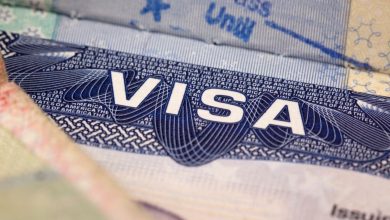U.S. Executions Surge in 2025: Trump’s Policies Drive Highest Death Penalty Rate in a Decade
Political motives, legal shifts, and Trump’s executive orders fuel a record rise in executions across Republican-led states.

The United States is witnessing a major rise in the number of executions during 2025, recording one of the highest death penalty rates in more than ten years after a historic decline during the COVID-19 pandemic.
According to official data, 41 executions have already been carried out this year, with six more scheduled before the end of the year unless judicial or executive authorities intervene.
Three executions are planned this week—two on Thursday in Florida and Oklahoma, and one on Friday in South Carolina. Records indicate that 2025 is now the most active year for executions since 2012, when 43 people were executed, while the last time the number surpassed 47 was in 2009.
Political Motives
Criminal justice experts say the reasons for this increase are complex, but political motives top the list. Robin Maher, executive director of the Death Penalty Information Center, stated that the rise in executions “reflects a primarily political effort,” noting the lack of evidence that public support for capital punishment has increased.
Recent Gallup polls show that only 52% of Americans now support the death penalty — a continuing decline since the 1990s. New death sentences have also dropped to record lows, with only ten issued by U.S. courts this year.
Despite this decline, the number of executions has been gradually rising post-pandemic: 11 in 2021, 18 in 2022, 24 in 2023, 25 last year, and 41 so far in 2025.

The Trump Effect
Experts also highlight the influence of President Donald Trump, who, upon returning to the White House, signed an executive order urging prosecutors to pursue capital punishment more aggressively — especially in cases involving undocumented immigrants or suspects accused of killing police officers.
Trump defended the measure as a “deterrent” against violent crime, though several studies question whether the death penalty has any proven impact on crime rates. The order is seen as a continuation of his first-term policy, during which he ended a 17-year federal moratorium and ordered 13 executions before leaving office.
Geography of Executions
Executions in 2025 have occurred across 11 states, including Florida, Texas, Alabama, Missouri, Oklahoma, and South Carolina — nearly all under Republican leadership. Florida tops the list with 15 executions so far, as Governor Ron DeSantis signs death warrants at an unprecedented pace.

Clearing Legal Backlogs
Another reason behind the current spike is the lifting of previous legal suspensions that had prevented executions in some states due to the review of lethal injection protocols, which faced criticism for frequent failures. Once restrictions were lifted, several states began carrying out long-delayed sentences.
States like Alabama and Louisiana have also adopted alternative methods such as nitrogen gas, while South Carolina reinstated execution by firing squad — carrying out its first such execution in 15 years. If Friday’s execution proceeds, three out of the state’s five executions this year will have used that method.
While lethal injection remains the most common method, the Trump administration has pledged to supply states with the necessary drugs to ensure executions continue.
Ongoing Debate
White House spokesperson Abigail Jackson stated that “the death penalty remains the appropriate punishment for some of the most heinous crimes,” reaffirming the administration’s support for the practice as a means of protecting society.
Despite ongoing moral and human rights controversies, the United States is closing out one of its most execution-heavy years since the start of the 21st century.



